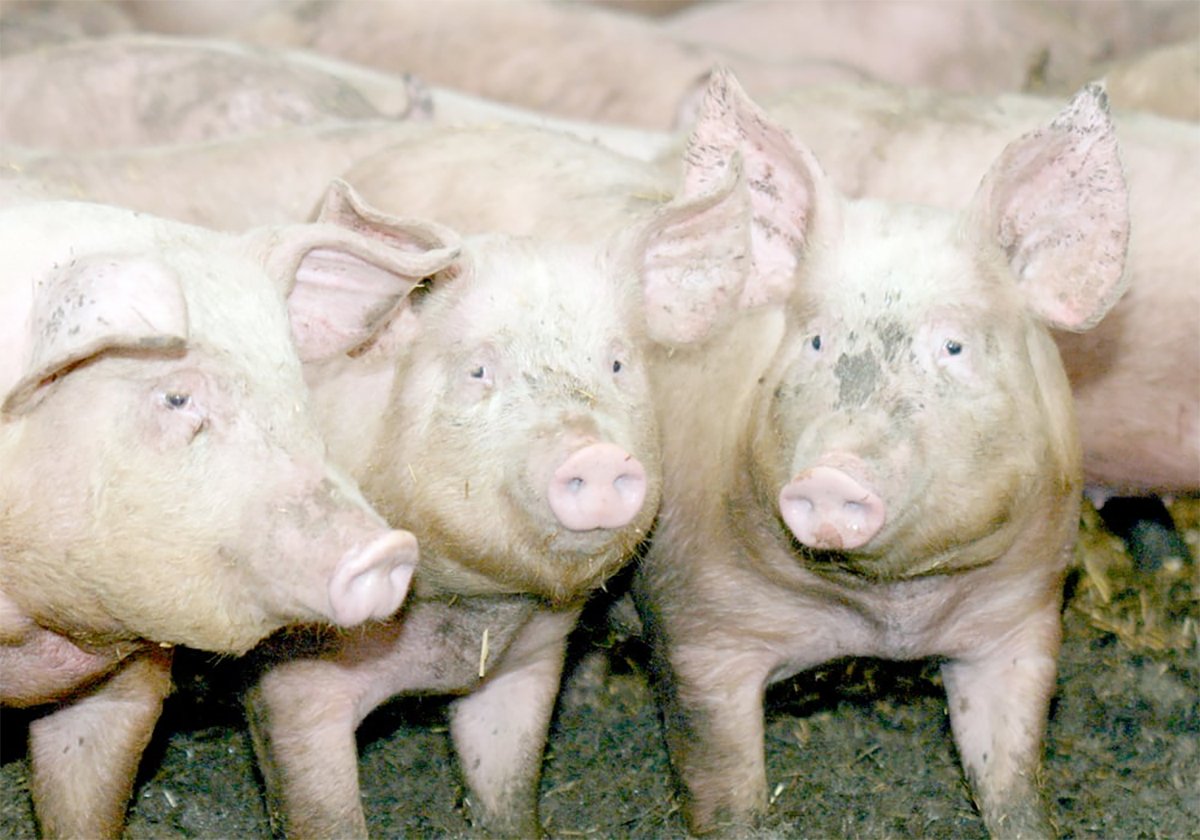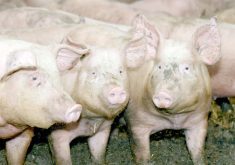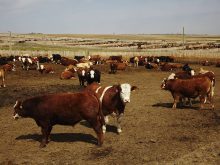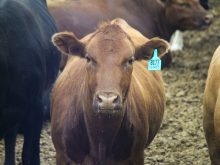LACOMBE, Alta. – When Leon Specht’s cattle are grazing alfalfa fields, he grabs handfuls of the crop and rubs it in his hands.
“If I get a green foamy material in my hands, they are going to bloat on it,” he said.
His caution is understandable, considering he has lost cattle to bloat caused by grazing alfalfa.
Besides monitoring cattle behaviour and plant development, he has also received a special personal use permit to import a New Zealand registered product called Blocare 4511. He adds it to his herd’s water supply and uses it during periods of bloat risk. The catch is a 90 day withdrawal period before slaughter.
Read Also

The Western Producer Livestock Report – November 13, 2025
Western Producer Livestock Report for November 13, 2025. See U.S. & Canadian hog prices, Canadian bison & lamb market data and sales insights.
A similar product called Alfasure was sold in Canada until last year, when it was removed from the market because of labelling problems. The Canadian Food Inspection Agency has been asked to review the case so it can return to market.
The potential risks and benefits of grazing alfalfa stands were discussed at a pasture school in Lacombe June 4.
To prevent a bloat disaster, it is important that producers know the properties of forages, understand cattle digestion and monitor environmental conditions that could make plants such as alfalfa a greater risk, said ruminant scientist Tim McAllister of Agriculture Canada.
“You don’t have to lose many animals before you are behind the eight ball in terms of your profit,” he said.
Another danger area is a change in diet that could upset rumen bacteria.
“If you go from something that is really indigestible to something that is very digestible, your likelihood of having a wreck is far greater than if you have a gradual adaptation,” he said.
“That is all because of the way the bacteria respond to it.”
Cattle can produce about 750 litres of the gas per day. Burping releases most of the gas but if the cattle don’t belch, they could bloat within hours. McAllister said animals die from suffocation because their diaphragms can’t move.
“An animal that cannot free itself of that gas will die in a matter of hours.”
Cattle can suffer from two types of bloat: free gas bloat or the more serious frothy bloat.
Bloat is caused by a buildup of foam in the rumen due to the entrapment of the normal gases of fermentation.
It is difficult to relieve foaming bloat. A tube down the esophagus may plug up, while punching a hole in the animals’s side requires a large opening to release the foam, which is under tremendous pressure.
Forcing cattle to move in the early stages may help.
Animals can develop bloat from other feed and other conditions, but many producers focus on alfalfa. It is a highly digestible feed and cattle gain well on it, but management is crucial.
The risk is highest when alfalfa is in the vegetative to early bloom stages.
Alfalfa’s rate of digestion in the rumen decreases as it enters the full bloom stages. Consequently, many producers may not allow their cattle to graze alfalfa until it is in full bloom or they may provide straw or hay in the paddock to add fibre.
A killing frost ruptures plant cell walls and releases more soluble protein in the plant, which many believe causes bloat. In addition, alfalfa is not safe after a frost so producers are advised to wait a week before returning to that forage.
Researchers have examined various ways to reduce bloat, including growing the low bloat risk variety AC Grazeland, adding Elanco Animal Health’s CRC bolus or using Pfizer Animal Health’s Bloat Guard additive.















